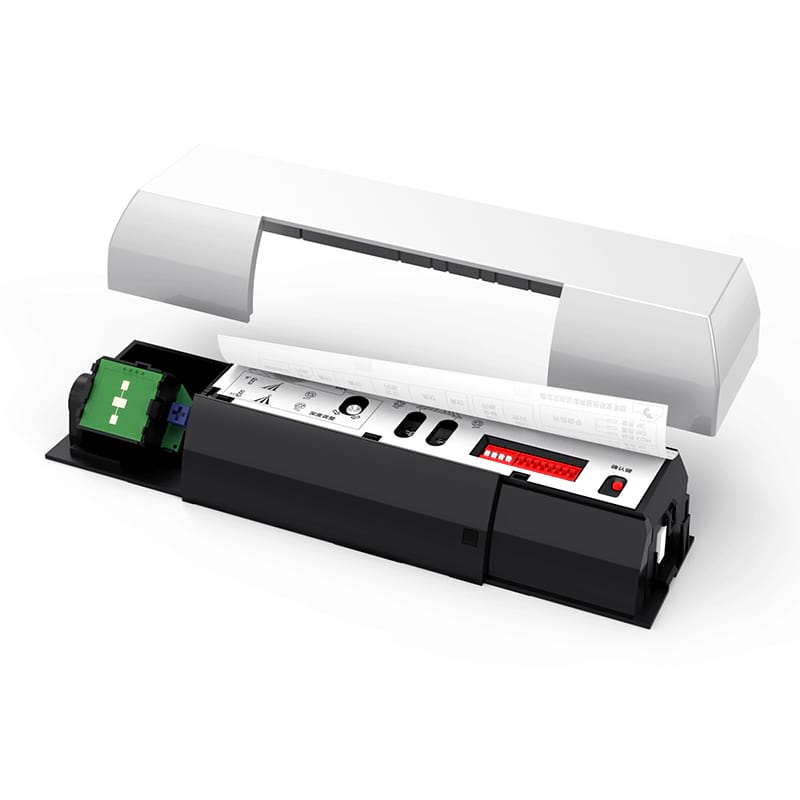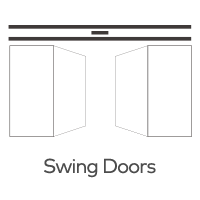Understanding the Power Supply Requirements for Automatic Door Sensors
Automatic door sensors play an essential role in modern building access solutions, ensuring smooth, safe, and energy-efficient door operation. For distributors, system integrators, and facility managers, one fundamental consideration is the power supply requirement of these sensors. Selecting an appropriate power source is critical for optimal sensor performance and long-term reliability.

This article provides a comprehensive overview of the typical power supply specifications for automatic door sensors and explains why adhering to these requirements is vital for successful installation and operation.
1. Standard Power Supply for Automatic Door Sensors
Most automatic door sensors on the market today are designed with flexibility in mind, enabling integration with various door operator brands and architectural layouts. Despite variations in design and detection technology, the majority of sensors share similar power supply ranges:
- Voltage Range: Typically, automatic door sensors operate within a 12–24 V DC or 12–24 V AC range.
- Current Consumption: Depending on the sensor’s complexity (e.g., microwave motion detection, infrared presence detection, or laser safety scanning), typical current draw ranges from 20 mA to 200 mA.
- Frequency Compatibility: For AC-powered models, 50 Hz and 60 Hz power frequencies are generally supported.
These standard specifications ensure that door sensors can be integrated easily with most automatic door operators, which usually provide a dedicated output for accessory power supply.
2. Why the Correct Power Supply Matters
A stable and correctly rated power supply is essential for maintaining the sensor’s detection accuracy and overall reliability. Insufficient or fluctuating voltage can cause:
- False detections or missed activations
- Delayed door response times
- Increased risk of malfunction or premature component failure
- Potential non-compliance with safety standards
Therefore, it is strongly recommended to follow the sensor manufacturer’s technical datasheet when planning power distribution for an automatic door system.
3. Power Supply Considerations for Different Sensor Types
Depending on the specific type of sensor, the power requirement may vary slightly:
| Sensor Type | Typical Voltage | Notes |
|---|---|---|
| Microwave Motion Sensor | 12–24 V AC/DC | Low current draw; fast activation |
| Infrared Presence Sensor | 12–24 V AC/DC | Slightly higher current draw for multi-spot detection |
| Combined Microwave + Infrared Sensor | 12–24 V AC/DC | Dual detection technology may consume more power |
| Laser Safety Sensor | 12–24 V DC | Precision scanning requires stable DC voltage |
4. Installation Best Practices
To achieve stable sensor performance and meet international safety regulations, consider the following guidelines:
- Use a regulated power supply: For DC models, ensure the voltage is clean and ripple-free.
- Verify cable specifications: Use power cables with appropriate gauge and shielding to prevent voltage drops and electromagnetic interference.
- Follow local electrical codes: Installation must comply with building codes and low-voltage wiring standards.
- Check grounding: Proper grounding minimizes static discharge and electrical noise.
5. Final Recommendations
Before installing or replacing an automatic door sensor, always consult the product’s technical documentation to confirm the exact voltage and current requirements. Reliable power supply planning is vital to maximize sensor lifespan, enhance pedestrian safety, and ensure compliance with international standards such as EN 16005 or ANSI/BHMA A156.10.
At Qinuo Electronics Co., Ltd., we provide detailed technical support and customized power solutions to help our customers deploy door sensors in diverse environments with confidence.
For more information on selecting the right sensor or to request a detailed datasheet, please visit www.u-sensors.com or contact our technical team.







